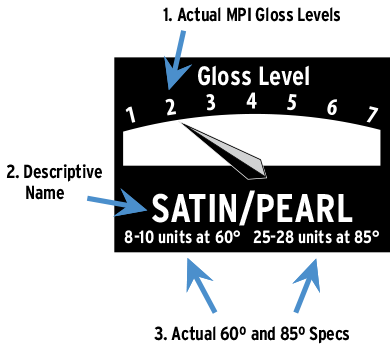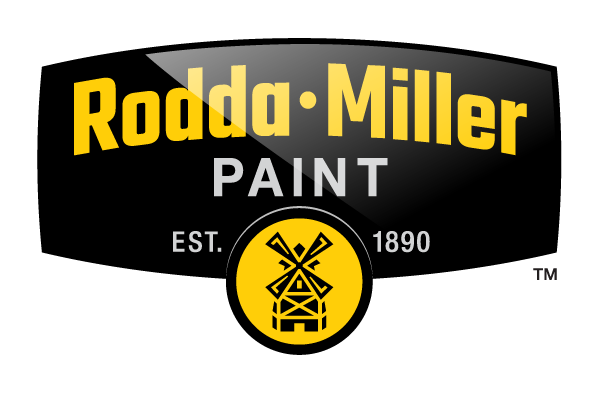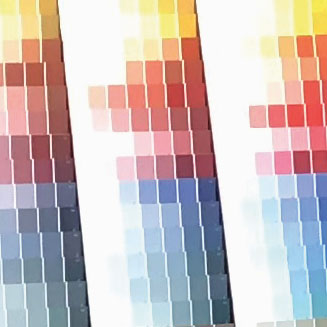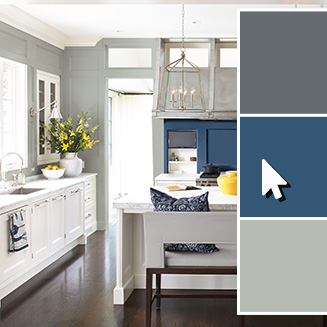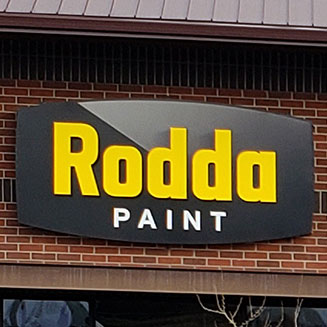PAINT GLOSS AND SHEEN
The terms GLOSS and SHEEN are often used interchangeably to describe the look of a Paint Finish, specifically the range of how glossy a paint finish appears. From a Technical specification perspective, GLOSS and SHEEN are actually two separate measurements used to describe the look of a Paint’s Finish. From a Paint Specification perspective, the various levels used to describe GLOSS and SHEEN are important characteristics of the performance and appearance of a Paint Finish.
Many commercial applications specify the Paint’s Finish, by way of Master Painter Institute’s (MPI) category. The MPI category not only describes the function and performance of coatings, but, the GLOSS level is a critical component of many of the MPI categories.
Names Given to Describe the Look of Finishes are NOT Technical
Paints have been around long before generally accepted industry performance standards and systems. Paint manufacturers, over time and based on their company’s location around the world, have described their finishes differently, creating a historical precedence in naming the Glossiness of their finishes.
One company may describe a Paint Finish by calling it Eggshell, while another may describe it as Satin. Similarly, Pearl may be the Finish name used by one company, while another chooses to call the Finish Low Gloss or even something different. It is important to note that the descriptive name of a particular SHEEN level is unique from manufacturer to manufacturer and is not governed or specified by any performance standard around the globe.
Industry Gloss Specifications
In order to provide Coatings Specifiers with a common language to describe Paint Finishes, MPI includes GLOSS and SHEEN measurements as part of the criteria for many of its MPI category specifications. MPI specifies 7 GLOSS levels, each of which are described below, along with their GLOSS measurement range (as seen at an 85º viewing angle) and SHEEN measurement range (as seen at a 60º viewing angle).
Definitions & Viewing Angles That Describe Paint Finishes
GLOSS
A 60º viewing angle looking at a PAINT FINISH – The most common viewing angle used by the Coatings industry to describe the various levels, from Flat to High Gloss. The GLOSS of a surface is described by a number based on the reflection of light from the surface that is independent of color. The higher the number, the ‘Glossier’ the Paint Finish. ASTM method D523 outlines the procedures for performing the test.
SHEEN
An 85º viewing angle looking at a PAINT FINISH – A very high angle viewing to be able to discern the lower GLOSS levels. At about the mid-range in GLOSS levels, it is difficult to use the eye to gauge sheen level, so lab instruments are required.
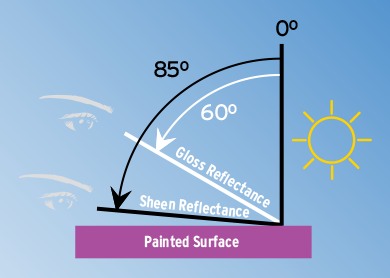
| Gloss at 60 Degrees | Sheen at 85 Degrees | |
| Gloss Level 1 – Traditional matte finish, Flat | Maximum 5 units | Maximum 10 units |
| Gloss Level 2 – High side sheen Flat, “Velvet-like” finish | Maximum 10 units | 10-35 units |
| Gloss Level 3 – Traditional “Eggshell-like” finish | 10-25 units | 10-35 units |
| Gloss Level 4 – “Satin-like” finish | 20-35 units | Minimum 35 units |
| Gloss Level 5 – Traditional Semi-Gloss | 35-70 units | N/A |
| Gloss Level 6 – Traditional Gloss | 70-85 units | N/A |
| Gloss Level 7 – High Gloss | More than 85 units | N/A |
Rodda Paint’s Sheen-O-Meter — Definition of Each Component
In order to be competitive in the marketplace, Rodda Paint Co. formulates many of its products to meet the MPI specifications. For many key categories, MPI specifies a GLOSS level. As Paints & Finishes pass the rigorous testing to be qualified under the MPI specifications, Rodda Paint can be even tighter on its GLOSS ranges, as we may want to have various products listed under one MPI category, but with nuances between the products. For example, a Gloss Level 5 is defined as 35-70 units at 60°. The expected look of a GL5/SemiGloss Paint Finish is 50, but, one may get better performance at 35 units instead and yet a moderate GLOSS reading of 65 is still considered GL5.
It is very important to note how we, at Rodda Paint Co. describe our Paint Finishes:
1. Gloss Level — The most important for the company is the GLOSS Level, which is described by the ACTUAL MPI Gloss Level (from 1 through 7).
2. Descriptive Name — The Descriptive name for the GLOSS as mentioned above, is purely that, Descriptive and it changes from company to company.
3. Actual Product GLOSS and SHEEN Specifications — To provide TECHNICAL information about the specifics of our Products and our Paint Finishes for our Customers and Specification writers, we provide the ‘tighter’ ranges that are based on our actual product formulas.
